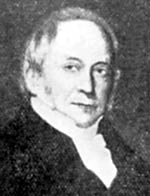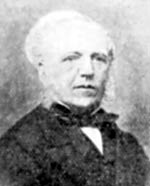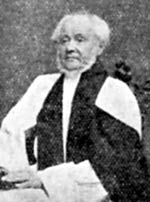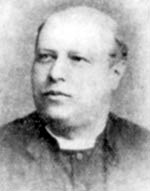MEN AND WOMEN OF SNEINTON.
it is desirable that a record should be kept of persons who have been, or who have attempted to be, of service to their fellows. We need not approve of all their opinions or deeds, but we ought to respect their memories for their useful efforts, and to aim at imitating what was good in them. Here follow the names of some who have tried to be useful.
The Rev. John Swaile. THE REV. JOHN SWAILE must have been a great worker, for in 1780 he was appointed vicar of Car Colston, and the next year, 1731, Vicar of Radford and Lenton, Masterof the Nottingham Free School, and Curate of Sneinton. No wonder he died before the year was out.
Joseph Lowe. JOSEPH LOWE, of Highfield, Alderman and J.P.. was buried at the parish church of Sneinton, 1810, as were several members of the Lowe family. Mr. Lowe was three times Mayor of Nottingham.
Robert Millhouse. ROBERT MILLHOUSE, author, lived in West Street, and a tablet on No. 32, Walker Street, states that he died there April 13th, 1889. He was the second of ten children, was sent to work at six, and placed in a stocking frame at ten. His education was gained at the Sunday School. "The spirit of poetry," says Wylie, "was first awakened within him at the age of sixteen years, by the inscription on a tablet under a bust of Shakespeare:—
"The cloud-capt towers, the gorgeous palaces, The
solemn temples, the great globe itself, Yea, all
which it inherits, shall dissolve; And like the
baseless fabric of a vision Leave not a rack
behind."
At twenty-two he joined the Militia, but the regiment was disbanded in 1814, and he returned to his stocking frame. During the greater part of his life he suffered from a lack of education, poverty, ill-health, added to which was a large family, yet he struggled bravely on, and, from 1820 to 1839, when he died. He published several books of poems. "Blossom," "Song of the Patriot," "Sherwood Forest" has some beautiful thoughts, "Destinies of Man, etc." These are in the Libraries. "Sherwood Forest and other Poems" was issued in 1827. In his first volume he said—
"Trent winding on shall hear again thy voice,
And nodding Sherwood listen and rejoice."
and in his second he says—
"And now, from scenes remote I haste away To
where wild Thorney skirts my native plains, And,
pleased, from rugged Mapperley survey Haunts
ever dear in joys and wasting pains."
He was a true lover of nature—
"From my early boyhood until now
Thy forest, Sherwood, held alone the spring
Whence gushed my inspiration."
His tomb may be seen in the General Cemetery, adjoining to Talbot Street wall.
Thomas Ragg. THOMAS BAGG, author, Haywood Street, appears in the Directory (Uearden's) 1884. He was, as a boy, in a printing office, then in a hosiery place, and afterwards employed by Mr. Dearden, Bookseller (now Bell's), Carlton Street. He wrote a poem in twelve books, "The Deity," which The Times newspaper pronounced to be "a very remarkable production; an elaborate philosophical poem by a working mechanic of Nottingham." "As a testimony of a converted infidel against the abounding infidelity of the age, Mr. Ragg's book rose swiftly into popular favour"—Wylie. "The Incarnation" was published in 1888; "Martyr of Verulam," 1834; "Heber," 1840, "Scenes," 1847, "Man's Dream and God's Reality," 1858. There were ten works. One of his best books was, "Creation's testimony to its God, or the accordance of Science, Philosophy, and Revelation." This reached its twelfth edition in 1878, and indicates careful observation, great thoughtfulness, reasoning power, fairness, and sympathy. He became a bookseller at Birmingham, and printed the first issue of "Creation's Testimony." He was ordained, and ultimately became Vicar of Lawley, Salop, where he died. The books are in the Nottingham Libraries. Here is the commencement of his book called "The Deity."
"Great Power Supreme! of life the Fountain-spring, Of life and all things; whose Almighty hand Has decked immensity with countless worlds, To tell of Thine existence:—Increate, Ineffable, I AM ! Assist my tongue To sing, and on me shed Thine influence down In rich profusion."
 |
Richard Morley. |
Richard Morley. RICHARD MORLEY was born at the Manor House, and became a Hosiery Manufacturer, and with his brother John founded the firm of "I. &R. Morley," of Nottingham and London, about 1797. In 1836 and 1841 he was Mayor of Nottingham, and was an alderman and a magistrate. In 1837 he was chairman of the meeting to inaugurate the formation of the Mechanics' Institution. When the Union Workhouse was built at Radford in 1839 for the three parishes of Radford, Lenton, and Sneinton, Mr. Morley became Chairman of the Board of Guardians. The parish minute book shows what an active part he took in parochial affairs. The family of Morleys had been from generation to generation resident at Sneinton. In 1689, among the list of ratepayers, is James Moarley, rated on £22 10s., and Gregory Moarley on £18 9s. Three generations of Samuel Morleys died in 1750, 1776 and 1797.
Mr. Richard Morley died in 1855, aged eighty. He was a fine-looking, dignified gentleman, every inch an Englishman, plain, of simple habits and tastes, with plenty of honest ambition. He came of a good old Puritan stock, and kept up the family traditions in his life and character. He was, although connected with Castle Gate Chapel, often to be found in the Morley pew in the old Sneinton Parish Church, and he took a keen interest in the development of Nottingham and its trades.
The trade of hosiery manufacture, and farming, at Sneinton, seems to have gone hand in hand, but the manufacture must have been in a small way. Little did the partners imagine that within one hundred years the Firm would have nine manufactories, and employ in them nearly five thousand persons, besides some thousands of out-door hands.
Arthur Morley. ARTHUR MORLEY was a member of the firm of I.& R. Morley. In his youth he had the advantage of good home influences, of a religious education, and he became a religious man in the best sense of the term. In his business dealings he was conscientious; to his workpeople be was kind, and considerate and helpful; towards young men he was particularly inclined by establishing Improvement Societies which he personally visited, and he took great interest in the Nottingham Mechanics' Institute. He had a truly catholic spirit which led him to aid gospel efforts regardless of denominations, with a liberality and sympathy much valued by those who knew him. It was largely through his interest and assistance that Albion Chapel was built. Its schools were mainly his contribution. He died suddenly in 1860, aged forty-eight, and was interred in the family tomb in Sneinton Churchyard, near to the Manor Street corner.
Samuel Morley. SAMUEL, MORLEY was not a Sneinton man. He was the son of John Morley, who as head of the firm went from Sneinton to London to take charge of that end of the business, and when the son became the head he enormously developed its operations, and among other ways one was to have a factory in Sneinton. Cropper's Factory in Manvers Street was purchased in 1866, and fitted up at a cost of £27,000, and in 1874 it was burnt to the ground. It was however, restored and extended, and now employs over five hundred bands. Handel Street Factory was another extension, bought in 1879, and employing three hundred and fifty persons. A statue of Mr. Morley stands in Parliament Street, placed their by public subscription, on which he is justly described as "Merchant, Philanthropist, Member of Parliament, Friend of Children, Social Reformer, Christian Citizen." He died in 1886, aged seventy-seven. One of his sons is the Rt. Hon. Arnold Morley, who was iu 1880 to 188u M.P. for Nottingham along with Col. Seely, and 1885 to 1895 for East Nottingham, of which Sneinton forms a part.
Elizabeth Teage. ELIZABETH TEAGE, who died at St. George's, Hanover Square, should be credited with having in 1776 bequeathed £100 for the benefit of the poor, the income from which is given in bread and coals on St. Thomas Day. WIDOW HAWKRIDGE'S like bequest must also be noted for poor widows.
Miss Elizabeth Downward. Miss ELIZABETH DOWNWARD was the Head Mistress of the Mixed and Infants' School for something like fifty years, and although not possessed of high attainments, she deserves a high place as a woman of sterling character and method, and she gave her scholars a most excellent training. Many of the girls remained with her in the Sunday School till seventeen or eighteen years of age, showing her influence over them, and many a home in Sneinton and elsewhere is still feeling the benefit of her example and influence for good. She died in 1897, and was buried at West Bridgford.
 |
William Burgass. |
 |
Rev. W H Wyatt. |
 |
Rev. Canon V W Hutton, M.A. |
William Burgass. WILLIAM BURGASS was a Coal Merchant, and had brickyards at Mapperley, and at Thorneywood, near to the house which he built. He was straightforward, kind hearted and useful When the Leen Valley Sewage Scheme for taking the sewage from Bulwell, Basford, Eadford, Lenton and Nottingham through Sneinton to Stoke Farm was formulated, he was chosen to represent Sneinton. Of its School Board he was chairman; of its Local Board he was an active member, and when Sneinton was incorporated with the Borough he was made an alderman. He died Oct. 31,1881, aged 65.
The Rev. W. H. Wyatt. THE REV. W. H. WYATT, who was incumbent for thirty-seven years—from 1831 to 1868—has the credit of a builder, for in 1839 the church of St. Stephen was built at a cost of £4,700; the Vicarage in 1843 at a cost of £2,000; and the Day Schools. One of his good points was that he knew how to set other people to work, and, while keeping a general oversight, not to unduly interfere with them. He thereby obtained a larger amount of good voluntary work. He retired to Melton Ross where he died.
The Rev. Canon Hutton. THE REV. CANON V. W. HUTTON, M.A., became Vicar in 1868 in succession to the Rev. W. H. Wyatt. In his address to his parishioners, among various items of interest, he says:—"I have no wish to interfere in anything which does not belong
to my office, which is that of a Steward of the Mysteries of God, and a Minister of the Gospel of Jesus Christ." To those persons who belong to other religious bodies than the Church of England he says— "If we must differ we can do so with charity and without misrepresentation. We profess to worship the same Lord ; it was one of His last earthly wishes that we should be one ; if we strive to become more like Him perhaps this wish will be accomplished."
He had served as curate in Lambeth to the afterwards celebrated Dean Gregory, of St. Paul's, who was a Nottingham boy. Canon Hutton's words were, to adapt a quotation from Sir John Denham, "deep, yet clear; gentle, yet not dull; strong, without rage; without o'erflowing, full." He was distinguished for his systematic work, and assisted by excellent men. He had marked personal character, sympathetic, yet full of common sense joined with humour. The effect of his training was obvious, for four of his assistants became canons—Canon Ebsworth, Canon Wanstall, Canon Townroe, and Canon Truman. He resigned in 1884, and died in 1887.
George Merchant. GEORGE MERCHANT was the Headmaster of the National School from 1850 to 1808, except that for two years he was one of the National Society's Organizing Masters. He raised the school to a high state of efficiency, and his work was distinguished by its thoroughness, and by the influence he exercised over the boys, shown in their afterlives, and this efficiency was maintained by his successors, Mr. John Steedman and Mr. C. P Hole. His powers in training boys in singing resulted in the beautiful service in the church, which for some years was scarcely surpassed in our cathedrals. When the strain of the work had begun to tell on Mr Merchant's health be accepted the Mastership of the small Endowed School at Wilford, and there he began the preparation of a book entitled, "Examples in Arithmetic, carefully graduated," each standard having its grade, compiled and printed separately in seven books; the "Answers" being printed apart so as to aid teachers. So well was this work done, so thoroughly adapted to its purpose, that the astonishing number of over three million issues of volumes or sections have been made. The author is still living in well-earned retirement. Mr. Merchant here is "long life and happiness to you!"
Among the successful scholars trained in the school may be named:—Arthur Blasdale Clarke, who became Town Clerk of Bamsgate; Thomas Coxon, who in 1903 became Mayor of Huntingdon; George Dance, who wrote "A Chinese Honeymoon," which had an enormous success; J. H. Beardsmore, author of "The History of Hucknall."
William Henry Wilcockson. WILLIAM HENRY WILCOCKSON lived in Minerva Terrace, and was Manager of the Nottingham and Notts. Bank. He was in 1847, and for some years the unpaid organist at St. Stephen's Church. The instrument, being then described as "small and ornamental," was removed from the west end gallery into the Quire, and the choir was formed into a society of young men. who where communicants and boys for the practice of sound church music in a reverend, catholic, and impressive manner, precisely as in all cathedrals and in many parochial churches. Mr. Wilcockson was a genial, kind-hearted, unselfish, religious man, and being very musically inclined he disliked the bare, formal, sing-song way in which church services were then conducted. It was he that bought the choir stalls from St. Mary's. He died in 1887, aged 70.
John S. Hedderly. JOHN S. HEDDERLY was a maltster. He took an Active part in parochial affairs, being on the Local Board, and the Board of Guardians. He was a man of superior mind, taking great pleasure in all branches of Natural History. His knowledge of Ornithology led to his being called as a witness before the Committee of the House of Commons, when the first Wild Birds Protection Act was under discussion. He often acted as a judge at floral centres, particularly in the case of carnations, picotees, and auriculas. He died in 1903, aged 84 years, and was buried in the churchyard of Bulcote.
Mrs. Davidson. MRS. DAVIDSON, of the Manor House, wife of Col. Davidson, was a lady distinguished for her devotion to personal work for the good of the people. She was a District Visitor, a Sunday School Teacher, and generally an active Church worker. She built and gave the Church Institute at a cost of £3,000, with its Assembly Hall, rooms for the young men, the Working Men's Club, Boys' Club, etc. In these rooms Mission Services were for some time conducted by Mr. Steedman. Mrs. Davidson died in 1912.
